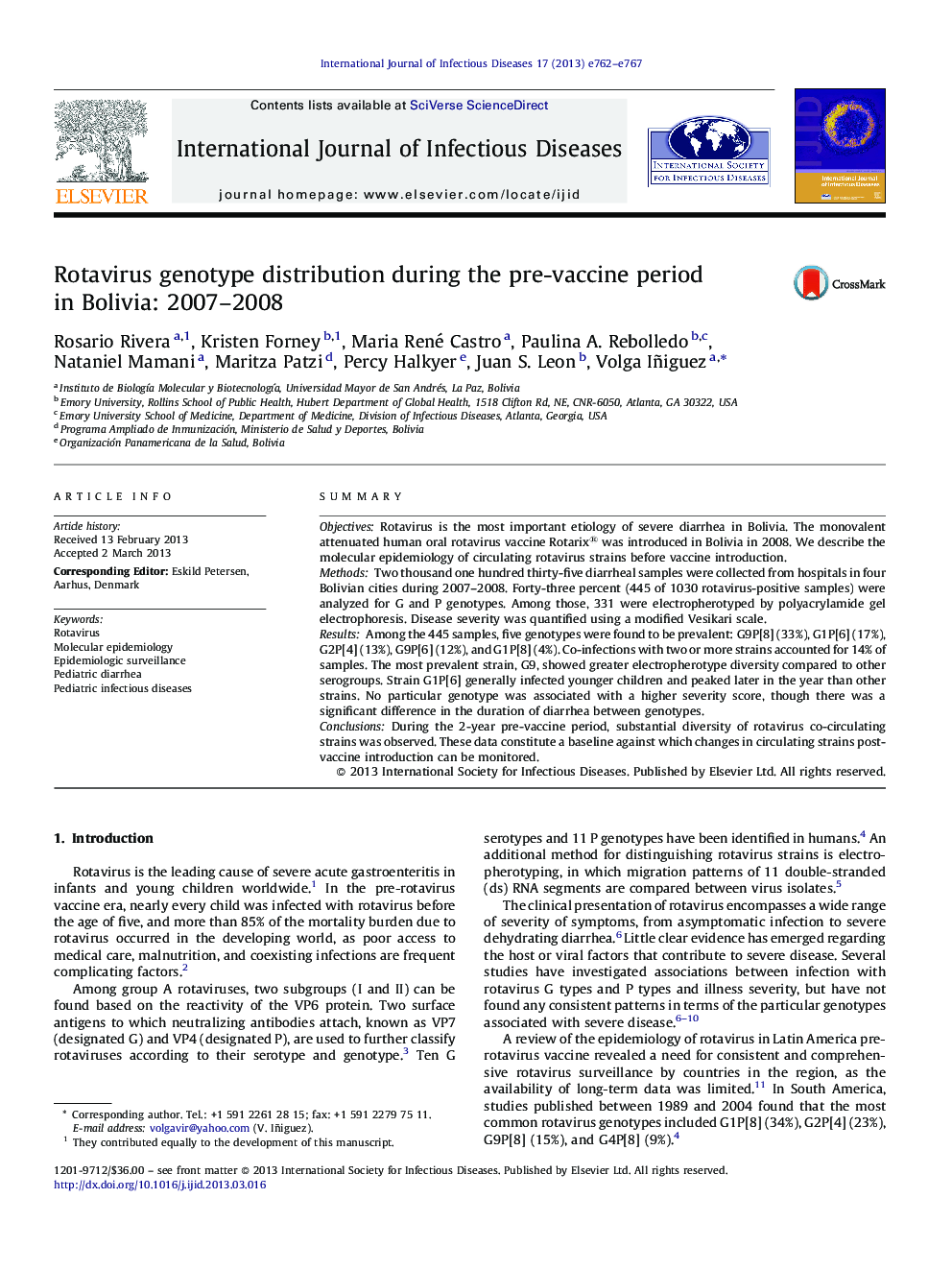| Article ID | Journal | Published Year | Pages | File Type |
|---|---|---|---|---|
| 3362918 | International Journal of Infectious Diseases | 2013 | 6 Pages |
SummaryObjectivesRotavirus is the most important etiology of severe diarrhea in Bolivia. The monovalent attenuated human oral rotavirus vaccine Rotarix® was introduced in Bolivia in 2008. We describe the molecular epidemiology of circulating rotavirus strains before vaccine introduction.MethodsTwo thousand one hundred thirty-five diarrheal samples were collected from hospitals in four Bolivian cities during 2007–2008. Forty-three percent (445 of 1030 rotavirus-positive samples) were analyzed for G and P genotypes. Among those, 331 were electropherotyped by polyacrylamide gel electrophoresis. Disease severity was quantified using a modified Vesikari scale.ResultsAmong the 445 samples, five genotypes were found to be prevalent: G9P[8] (33%), G1P[6] (17%), G2P[4] (13%), G9P[6] (12%), and G1P[8] (4%). Co-infections with two or more strains accounted for 14% of samples. The most prevalent strain, G9, showed greater electropherotype diversity compared to other serogroups. Strain G1P[6] generally infected younger children and peaked later in the year than other strains. No particular genotype was associated with a higher severity score, though there was a significant difference in the duration of diarrhea between genotypes.ConclusionsDuring the 2-year pre-vaccine period, substantial diversity of rotavirus co-circulating strains was observed. These data constitute a baseline against which changes in circulating strains post-vaccine introduction can be monitored.
